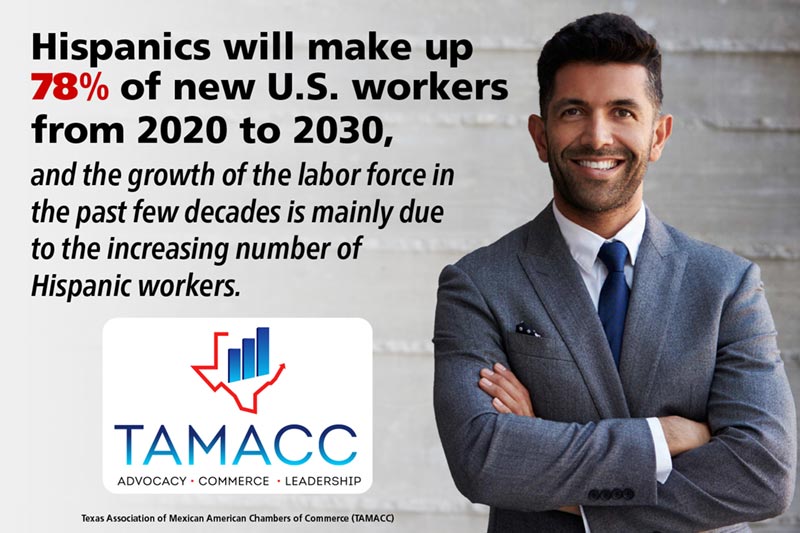
The landscape of the U.S. labor force is undergoing a significant transformation, with Hispanics emerging as a driving force behind its growth. In recent years, the proportion of Hispanic workers has steadily increased, contributing substantially to the labor force expansion overall. As the nation looks toward the future, projections indicate that Hispanics will continue to play a vital role in shaping the workforce. This post explores the remarkable growth of Hispanics in the labor force, their increasing labor force participation rates, and the factors that contribute to their expanding presence.
Over the past few decades, the growth rate of the U.S. labor force has slowed, and non-Hispanic workforce growth has been negligible, at just 0.5% over the past ten years. However, the nation’s overall labor force growth rate jumps 4.5% when accounting for Hispanic workers’ growth. This statistic alone highlights the significance of the Hispanic community’s contribution to expanding the labor force.
From 10.7 million in 1990 to 29 million in 2020, Hispanic workers in the labor force have experienced remarkable growth. Even more impressively, projections suggest this trend will continue, with the Hispanic labor force expected to reach 35.9 million by 2030. The growth trajectory is clear, and Hispanics are positioned to become an increasingly influential segment of the U.S. workforce.
While the gap between Hispanics and non-Hispanics in the overall labor force remains substantial, it is steadily shrinking. In 1990, Hispanics accounted for 8.5% of the labor force, rising to 18.0% in 2020. Projections from the Bureau of Labor Statistics indicate that by 2030, Hispanics will make up approximately 21.2% of the labor force, representing one out of every five workers.
This narrowing gap indicates the growing Hispanic population in the United States and their increasing labor force participation rates. Hispanics have a higher labor force participation rate than non-Hispanics, which can be attributed to their younger age and a larger representation in the prime working age group of 25-54 years old. With a median age of 38.5 compared to the overall population’s median age of 42.0, Hispanics are more likely to be in their prime working years, actively contributing to the labor force.
The expanding presence of Hispanic workers in the labor force brings several benefits to the economy and society. Their contributions foster economic growth, fuel innovation, and drive consumer spending. Additionally, the increasing representation of Hispanics in various industries and sectors enhances diversity and promotes a broader range of perspectives and ideas.
Furthermore, as the Hispanic population grows, addressing existing disparities in education and skills development becomes increasingly important. By providing equitable access to quality education and training opportunities, we can ensure that the Hispanic workforce is well-equipped to meet the evolving demands of the job market, leading to even greater economic prosperity.
The growing influence of Hispanics in the U.S. labor force is a significant trend that should be celebrated and embraced. Our contributions have been instrumental in driving the overall labor force growth rate, breathing new life into the American economy. As the number of Hispanic workers continues to rise, it is crucial for policymakers, educators, and businesses to recognize and support this dynamic and diverse workforce. By investing in their education, skills development, and opportunities for advancement, we can unlock the full potential of the Hispanic labor force and build a stronger, more inclusive future for all.





















